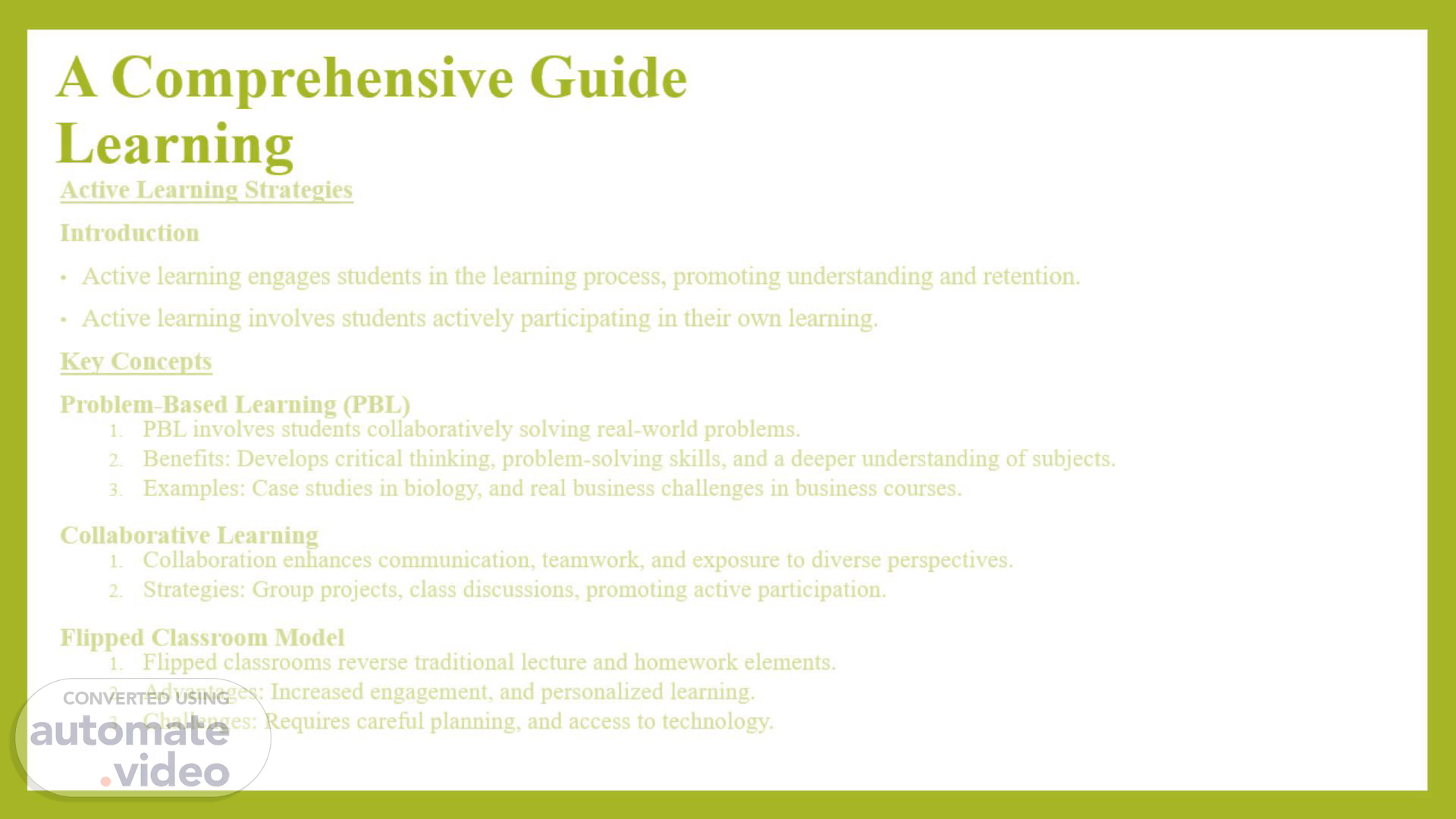
Page 1 (0s)
A Comprehensive Guide To Higher Education Learning.
Page 2 (33s)
Assessment and Feedback Strategies. Introduction Assessment and feedback are integral for understanding student progress and facilitating improvement. Effective assessment guides instructional decisions and supports continuous learning. Key Concepts Formative Assessment Ongoing assessment during the learning process for immediate feedback. Examples: Quizzes, polls, discussions, and observations. Constructive Feedback Feedback is specific, timely, and focuses on strengths and areas for improvement. Strategies: Use of rubrics, and prompt feedback delivery. Rubrics for Evaluation Rubrics provide a consistent framework for evaluating student work. Tips: Clearly define criteria, and share rubrics before assignments..
Page 3 (59s)
Technology Integration in Teaching. Introduction Technology enhances teaching and learning experiences, providing access to resources and preparing students for the digital age. Significance lies in fostering collaboration, accessibility, and efficient organization. Key Concepts Learning Management Systems (LMS) LMS manages course content, and assignments, and facilitates communication. Examples: Discussion forums, and centralized storage for materials. Interactive Multimedia Multimedia engages students through videos, simulations, and graphics. Examples: Virtual labs, interactive maps, and timelines. Online and Blended Learning Online learning is fully virtual, blended learning combines face-to-face and online elements. Considerations: Ensure accessibility, and provide clear guidelines..
Page 4 (1m 29s)
Key Takeaways! All Yours For Questioning Now!. Active Learning Strategies Engages students actively in the learning process. Promotes critical thinking, problem-solving, and deeper understanding. Encourages collaboration, enhancing communication and teamwork. Flipped classrooms offer personalized learning but require careful planning. Assessment and Feedback Strategies Formative assessment provides ongoing feedback during the learning process. Constructive feedback is specific, timely, and focuses on improvement. Rubrics enhance assessment transparency and guide student understanding. Effective assessment and feedback create a supportive learning environment. Technology Integration in Teaching Learning Management Systems (LMS) streamline course management and communication. Interactive multimedia engages students through various formats. Online and blended learning models offer flexibility and accessibility. Continuous adaptation to technology prepares students for the digital age. The Floors Is All Yours For Questions Now!.